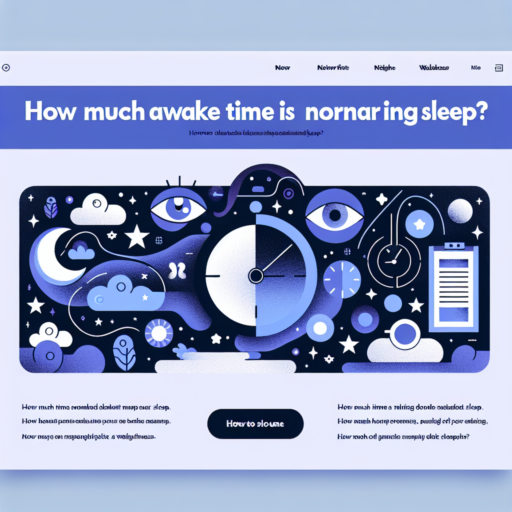Which is better REM or deep sleep?
Understanding the intricacies of sleep stages, particularly REM (Rapid Eye Movement) and deep sleep, is fundamental to answering the perennial question: Which is better REM or deep sleep? It’s essential to grasp that both stages are integral components of a good night’s rest, serving distinct purposes for our physical and mental health.
REM sleep is known for its vital role in emotional regulation and memory consolidation. During this phase, the brain is almost as active as it is while awake, processing experiences from the day, and encoding them into long-term memories. This stage of sleep is also when most dreaming occurs, playing a significant role in learning and problem-solving.
In contrast, deep sleep is the period of sleep when your body recovers the most. During this stage, also known as slow-wave sleep, the body repairs tissues, builds bone and muscle, and strengthens the immune system. Essentially, deep sleep is the body’s opportunity to rejuvenate and prepare for the next day. Its importance can’t be overstated, especially for those engaged in high levels of physical activity.
What are the 4 stages of sleep?
Understanding the 4 stages of sleep is crucial for grasping how sleep works and its importance for our overall health. These stages encompass a cycle from light to deep sleep, each playing a unique role in the sleep process. Let’s dive into these stages to understand what happens during our nightly slumber.
NREM Stage 1
The first stage is the Non-Rapid Eye Movement (NREM) Stage 1. This short phase marks the transition from wakefulness into sleep. During this time, the body begins to relax, muscles unwind, and brain wave activity starts to slow down. It’s a light sleep state from which people can be easily awakened.
NREM Stage 2
As sleep progresses into NREM Stage 2, the body goes into a deeper state of relaxation. Here, the heart rate slows, body temperature drops, and eye movements cease. Brain waves are interspersed with short bursts of activity known as sleep spindles and K-complexes. This phase prepares the body for deep sleep and occupies approximately 50% of sleep time in adults.
NREM Stage 3 and REM Sleep
The third stage is the deep sleep phase, also referred to as NREM Stage 3. During this stage, brain waves are at their slowest, and this is when the body repairs muscles and tissues, stimulates growth and development, boosts immune function, and builds energy for the next day. Following deep sleep, the Rapid Eye Movement (REM) Sleep stage kicks in. Here, brain activity revives, dreams occur, and the body becomes immobilized but energized, solidifying memories and learning. These cycles repeat several times throughout the night.
How many hours of REM sleep do you need?
Understanding the importance of REM (Rapid Eye Movement) sleep is crucial for maintaining optimal health and well-being. REM sleep, often referred to as the dream phase of sleep, plays a significant role in memory consolidation, emotional regulation, and brain development. But the question of how many hours of REM sleep do you need varies depending on several factors including age, lifestyle, and overall health.
For most adults, REM sleep constitutes about 20-25% of the total sleep cycle. This translates to roughly 1.5 to 2 hours of REM sleep per night. It’s important to note that the distribution of REM sleep is not uniform throughout the night. Early sleep cycles have shorter REM periods, and they gradually lengthen, with the longest periods occurring towards the morning.
Factors Influencing REM Sleep Needs
- Age: Newborns require much more REM sleep, roughly about 50% of their sleep time, which supports brain development. This need decreases with age.
- Stress and Lifestyle: High levels of stress and certain lifestyle choices can negatively impact the quality and quantity of REM sleep, making it necessary for some individuals to aim for more REM sleep to compensate.
- Health Conditions: Certain medical conditions may either increase the need for REM sleep or make it harder to achieve, requiring adjustments in sleep habits.
In conclusion, while the general guideline suggests aiming for 1.5 to 2 hours of REM sleep per night, it’s essential to consider personal circumstances and health to ensure you are meeting your body’s specific needs. Remember, quality often trumps quantity when it comes to healthy sleep cycles.
Which sleep stage is most important?
Identifying the most important sleep stage has been a topic of considerable discussion among sleep researchers. Each stage of sleep plays a unique role in our overall health and well-being, making the question more complex than it might initially seem. However, many experts highlight the importance of Rapid Eye Movement (REM) sleep for its profound benefits on the mind and body.
During REM sleep, our brains are almost as active as they are while awake, which is crucial for processes like memory consolidation and mood regulation. This stage of sleep, typically first occurring about 90 minutes after falling asleep, accounts for approximately 20-25% of an adult’s sleep cycle. The unique characteristics of REM sleep, including the vivid dreams that often occur during this phase, are indicative of its significance in our sleep architecture.
Nonetheless, it’s essential to acknowledge the roles of other sleep stages, such as deep sleep (or slow-wave sleep), in physical recovery and growth hormone release. This highlights that the importance of sleep stages can be contextual, varying according to an individual’s specific health and developmental needs. Addressing which sleep stage is most important requires a nuanced understanding of the intricate dynamics of sleep and its impact on our health.










